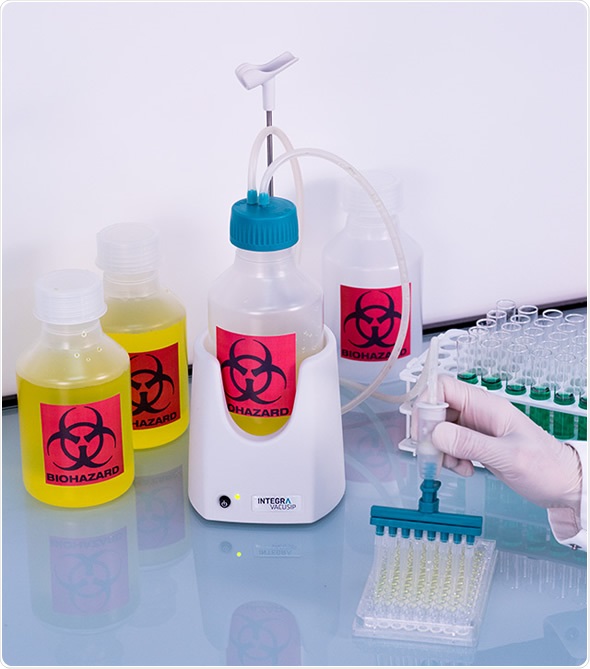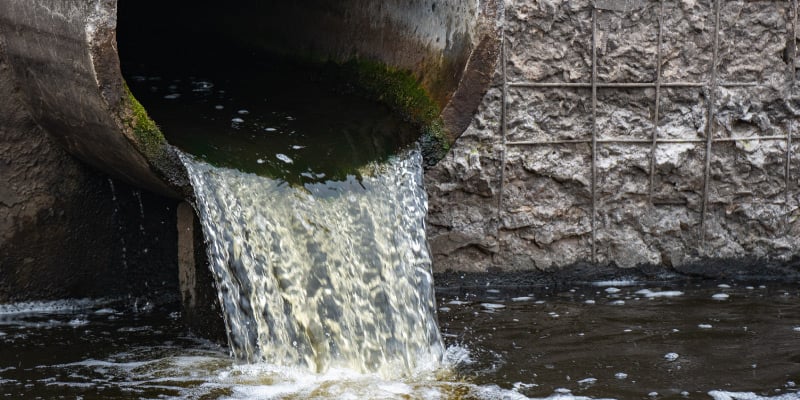Industrial Wastewater Treatment: Personalized Solutions for Complicated Wastewater Obstacles
Industrial Wastewater Treatment: Personalized Solutions for Complicated Wastewater Obstacles
Blog Article
Exactly How Fluid Waste Disposal Works: An In-depth Summary of Methods and Technologies Used

Overview of Fluid Waste Types
The complexity of fluid waste types necessitates a comprehensive understanding of their qualities and implications for disposal. Liquid waste can broadly be categorized right into several kinds, consisting of industrial, metropolitan, farming, and hazardous waste. Each classification shows unique residential properties, calling for particular administration methods to mitigate ecological and wellness risks.
Industrial liquid waste stems from manufacturing processes and often includes a range of impurities, such as hefty steels, solvents, and organic substances. Local fluid waste, mostly comprising wastewater from homes and industrial establishments, contains raw material, nutrients, and virus (industrial wastewater treatment). Agricultural liquid waste, including overflow from ranches, may consist of plant foods, pesticides, and animal waste, posturing dangers to water quality and ecological communities
Harmful liquid waste is identified by its toxicity, sensitivity, or potential to create damage. This group includes substances like acids, bases, and particular chemicals that demand rigid handling and disposal protocols. Comprehending these diverse fluid waste kinds is critical for developing reliable disposal techniques and guaranteeing conformity with environmental policies. Proper category and characterization are important for applying suitable treatment strategies and reducing the unfavorable effect on public wellness and the environment.
Physical Therapy Approaches

Screening is the first action, where bigger fragments and debris are eliminated from the liquid waste using screens or grates. In sedimentation tanks, much heavier particles clear up at the bottom, forming a sludge layer, while the cleared up fluid can be more dealt with.
Filtration is one more essential technique that includes passing the fluid through porous products, such as sand or membrane layers, to record smaller sized bits. This step boosts the quality of the fluid, making it ideal for succeeding treatment procedures.

Chemical Therapy Techniques
Chemical treatment methods are crucial for efficiently handling fluid waste, specifically in dealing with liquified and colloidal contaminants that physical methods may not adequately get rid of. These methods make use of various chemical agents to reduce the effects of, precipitate, or transform harmful materials right into much less dangerous types.
One usual approach is coagulation and flocculation, where chemicals such as alum or ferric chloride are included to promote the aggregation of suspended bits. This process improves sedimentation, permitting easier elimination of the resulting sludge. Furthermore, oxidation processes, employing agents like chlorine or ozone, are employed to break down complicated natural substances and virus, making the waste much safer for discharge or additional treatment.
Neutralization is an additional crucial strategy, which readjusts the pH of acidic or alkaline waste streams to neutral levels, avoiding possible injury to downstream systems and the environment. Additionally, advanced oxidation procedures (AOPs) make use of combinations of oxidants and ultraviolet light to degrade relentless contaminants, accomplishing a greater degree of therapy effectiveness.
Organic Therapy Procedures
Biological therapy procedures play an essential duty in the administration of liquid waste by making use of microbes to disintegrate raw material and lower impurity levels. These procedures can be extensively categorized into cardio and anaerobic treatments, each employing certain microbial areas to achieve effective waste destruction.
Aerobic treatment involves the usage of oxygen to promote the break down of natural products by bacteria. This process is generally carried out in triggered sludge systems, where oygenation tanks supply a conducive atmosphere for microbial development, resulting in the oxidation of natural contaminants. The resultant biomass can be divided from treated effluent through sedimentation.
In contrast, anaerobic treatment takes place in the lack of oxygen, counting on various bacteria to break down raw material. This approach is specifically beneficial for high-strength waste, as it generates biogas, a renewable resource source, while lowering sludge manufacturing. Technologies such as anaerobic digesters are regularly employed in industrial and metropolitan applications.
Both anaerobic and aerobic biological therapies not just reduce the environmental influence of fluid waste yet directory also help with resource recovery, making them important parts of lasting waste administration methods. Their efficiency, adaptability, and efficiency sustain their prevalent execution throughout numerous sectors.
Emerging Technologies in Disposal
Ingenious approaches to fluid garbage disposal are quickly progressing, driven by innovations in technology and an increasing focus on sustainability. Amongst these arising modern technologies, membrane layer bioreactors (MBRs) have actually gained traction for their capacity to incorporate organic treatment with membrane purification, leading to high-grade effluent that can be recycled in different applications. MBRs make it possible for smaller footprints and much more efficient procedures compared to standard systems.
An additional promising development is the usage of anaerobic digestion incorporated with nutrient recuperation innovations, which not just treats fluid waste but additionally creates biogas and recoups valuable nutrients like nitrogen and phosphorus. This dual advantage improves resource efficiency and reduces ecological influence.
Additionally, progressed oxidation processes (AOPs) are being taken on for the deterioration of intricate organic contaminants. These methods utilize powerful oxidants and stimulants to break down contaminants at the molecular level, providing a highly effective service for challenging waste streams.
Furthermore, the combination of artificial intelligence and device knowing in waste monitoring systems is maximizing operational effectiveness and predictive maintenance, causing reduced costs and enhanced environmental compliance. These modern technologies show a considerable change in the direction of more lasting and reliable fluid garbage disposal techniques.
Final Thought
In final thought, reliable fluid waste disposal necessitates a detailed understanding of numerous read this article strategies and modern technologies. The integration of physical, chemical, and biological therapy techniques guarantees the reliable management of varied waste types. Additionally, the emergence of cutting-edge technologies boosts treatment efficacy and promotes sustainability in waste monitoring methods. By constantly advancing these techniques, it comes to web be feasible to attend to the growing obstacles connected with liquid waste, ultimately contributing to environmental management and source recuperation.
Liquid waste disposal is a crucial facet of ecological administration, calling for a thorough understanding of various techniques and technologies tailored to various waste types. Fluid waste can generally be categorized into numerous kinds, consisting of commercial, metropolitan, farming, and unsafe waste. Agricultural fluid waste, consisting of overflow from ranches, might have plant foods, chemicals, and pet waste, presenting threats to water quality and ecological communities.
Numerous physical therapy techniques play a critical role in taking care of fluid waste properly - industrial wastewater treatment.In conclusion, efficient liquid waste disposal necessitates a detailed understanding of different techniques and technologies
Report this page